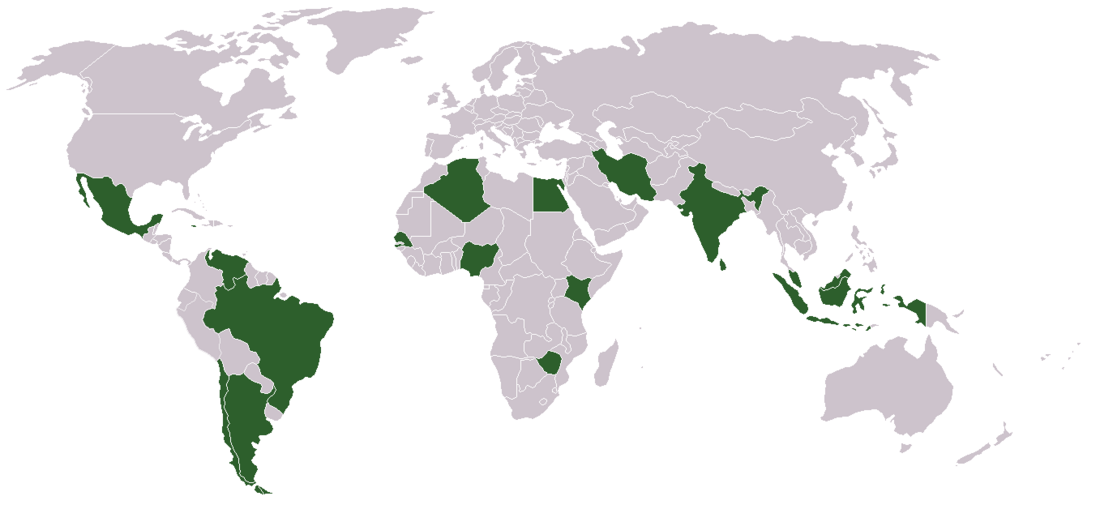Top Qs
Timeline
Chat
Perspective
Group of 15
Informal forum From Wikipedia, the free encyclopedia
Remove ads
The Group of 15 (G-15)[1] is an informal forum set up to foster cooperation and provide input for other international groups, such as the World Trade Organization (WTO) and the Group of Seven. It was established at the Ninth Non-Aligned Movement Summit Meeting in Belgrade, Yugoslavia, in September 1989, and is composed of countries from Latin America, Africa, and Asia with a common goal of enhanced growth and prosperity. The G-15 focuses on cooperation among developing countries in the areas of investment, trade, and technology. Chile, Iran and Kenya have since joined the Group of 15, whereas Yugoslavia is no longer part of the group, and Peru, a founding member-state, decided to leave the G-15 in 2011. Membership thus has since expanded to 17 countries, but the forum's name remains unchanged.[3]
Remove ads
Structure and activities
Summarize
Perspective
Some of the objectives of the G-15 are:
- To harness the considerable potential for greater and mutually beneficial cooperation among developing countries
- To conduct a regular review of the impact of the world situation and of the state of international economic relations on developing countries
- To serve as a forum for regular consultations among developing countries with a view to coordinate policies and actions
- To identify and implement new and concrete schemes for South-South cooperation and mobilize wider support for them
- To pursue a more positive and productive North-South dialogue and to find new ways of dealing with problems in a cooperative, constructive and mutually supportive manner.[4]
By design, the G-15 has avoided establishing an administrative structure like those for international organizations, such as the United Nations or the World Bank; but the G-15 does have a Technical Support Facility (TSF) located in Geneva. The TSF functions under the direction of the Chairman for the current year. The TSF provides necessary support for the activities of the G-15 and for its objectives.[5] Other organs and functions of the G-15 include:
- Summit of heads of state and government: The G-15's summit is organized biennially, with the venue being rotated among the three developing regions of the G-15 membership.[5]
- Annual meetings of Ministers of Foreign Affairs: G-15 Ministers of Foreign Affairs typically meet once a year to coordinate group activities and to prepare for the nest summit of G-15 leaders.[5]
- Steering committee (Troika): A steering committee, or Troika, is composed of three foreign ministers, one from the preceding summit host country, the present host country and the anticipated next host countries. These three are responsible for oversight and coordination.[5]
- Personal representatives of heads of state and government: Each member country is represented by personal representatives of heads of state and government who meet regularly in Geneva.[5]
In addition, the Federation of Chambers of Commerce, Industry and Services (FCCIS) is a private sector forum of G-15 member countries. The purpose of the FCCIS is to coordinate and maximize efforts which promote business, economic development and joint investment in G-15 nations.[5]
In 2010, the chairmanship of the G-15 was accepted by Sri Lanka at the conclusion of the 14th G-15 summit in Tehran.[6]
Remove ads
Member countries and organizations
Summarize
Perspective
World Bank (2023)[7]
Remove ads
G-15 Summits
See also
References
Further reading
External links
Wikiwand - on
Seamless Wikipedia browsing. On steroids.
Remove ads

